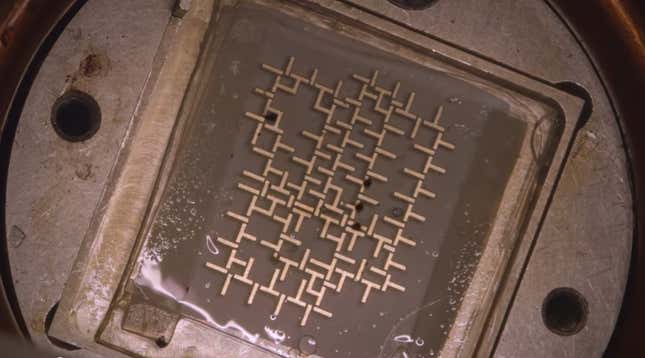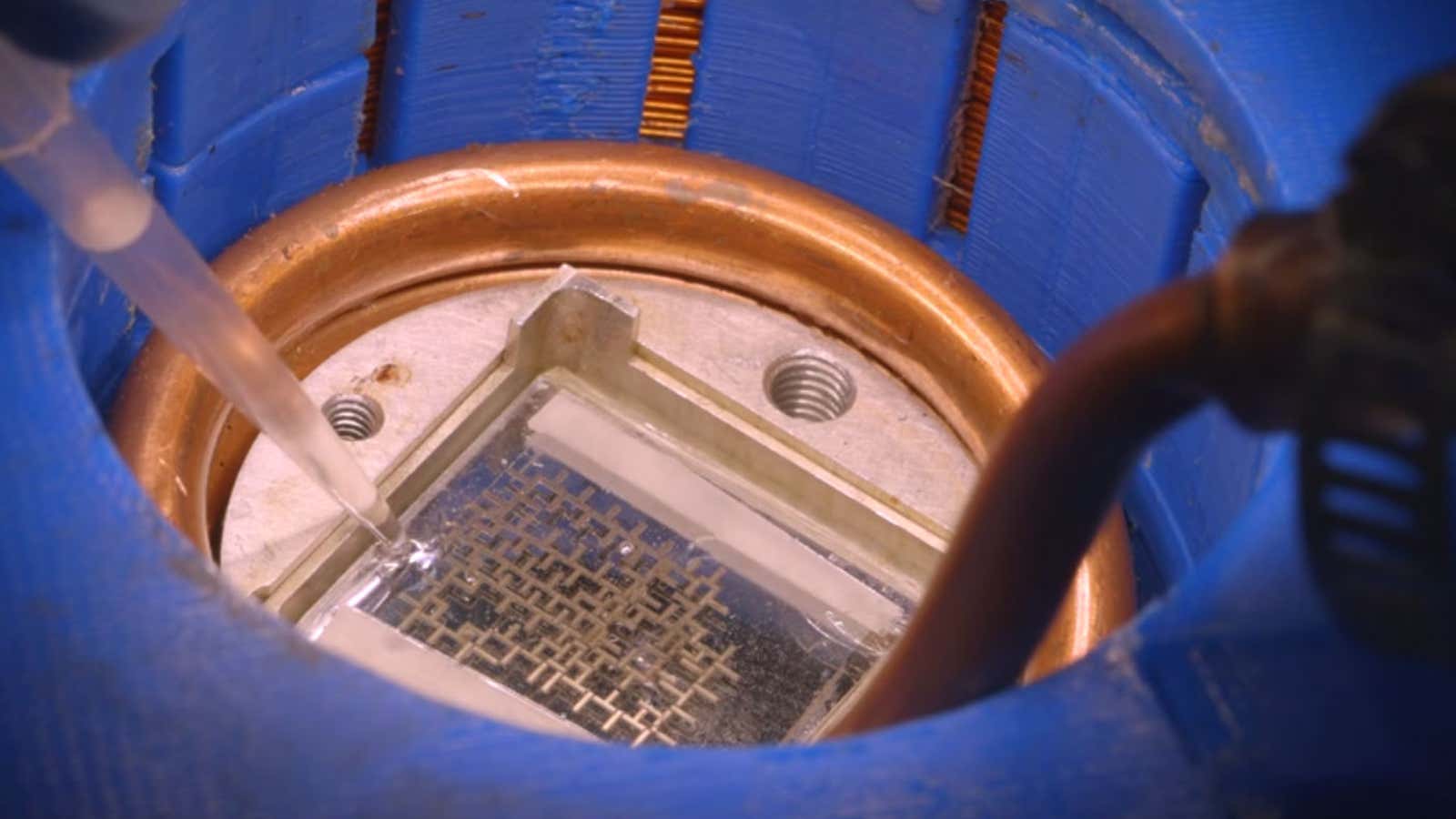A team of bioengineers have created a computer that runs on water droplets. It’s not going to replace any of your gadgetry, but the goal is to use the logic behind a computer network to control and manipulate physical matter.
Essentially, very small droplets of water—carrying any number of chemical or biological components inside—move around metallic I- and T-shaped bars. The way those bars are magnetized on the track decides how the iron-containing water droplet moves. By changing the layout of the bars, the droplets—which are really just floating liquid magnets—can carry out logic operations just like a computer chip. But the pace of the logic operations is going to be incredibly slow compared to silicon chips, which can perform millions of such operations per second.

“Our goal is not to compete with electronic computers or to operate word processors on this,” said Manu Prakash, an assistant professor of bioengineering at Stanford University and lead author of the study. ”Our goal is to build a completely new class of computers that can precisely control and manipulate physical matter.”
The idea is to revolutionize the field of microfluidics, which is the science of manipulating water droplets. The droplets are being used as tiny beakers carrying chemicals. In microfluidics, the droplets are programmed to mix with other droplets containing chemicals and ensure that a chemical reaction happens in just the right conditions.
For instance, the right set of water droplets, mixed in the right order, could create personalized medicine inside someone’s body. Think of it as swallowing an extremely small biological computer programmed to do exactly what your body needs. Though such a thing can’t be done today, development to Prakash’s technology could one day enable it.
The current microfluidic technology is useful but limited. For instance, today a “lab-on-a-chip” can use incredibly small amounts of blood to perform a slew of important tests. The chip cuts down waste and reduces the time to do the test, but it cannot do things that are more complex, such as mix many different chemicals in different orders to create something useful.
In the study, published in Nature Physics, Prakash argues that the kind of manipulation of chemicals he’s doing could increase the pace of chemistry research, and even help bring the much-promised personalized medicine revolution.




